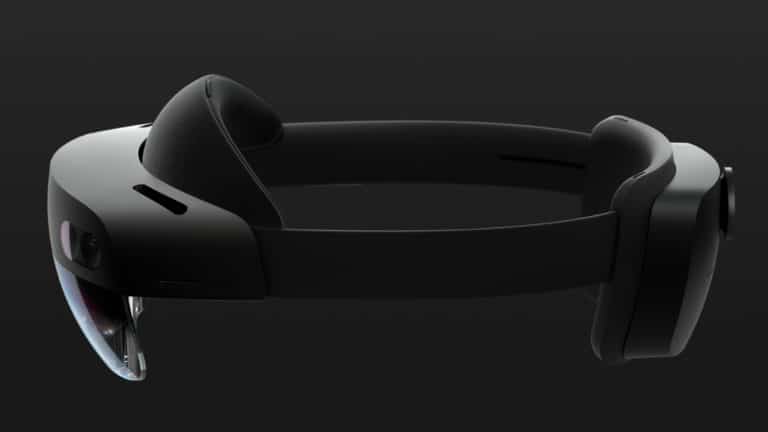
Microsoft’s Hololens2 isn’t a new device, having released in November 2019. But its supply chain has been so backed up that most of the world hasn’t experienced it yet. This is partly due to demand outstripping supply (a good problem to have) and large-order commitments.
These realities, plus the device’s relatively advanced specs, deem it a still-new device. This compelled Upload VR to recently give HoloLens2 the new device treatment in the form of a product review. So we’re featuring it for this week’s XR Talks (video and takeaways below).
Double-Edged Sword
Upload’s always-astute Jaime Feltham starts by telling us that HoloLens 2 is a bit of a double-edged sword. The device can be seen as ahead of its time “for both better and worse,” says Feltham. It’s a trailblazer, but that also makes it too early and expensive for consumer adoption.
This is the reason that Microsoft has solely targeted the enterprise for HoloLens 2. That goes for product design, positioning and marketing — a departure from the original HoloLens. The latter had at least some marketing that promoted consumer use cases like Minecraft.
The enterprise focus is comparatively what Magic Leap failed to do — at least at first. It pivoted to an enterprise focus after realizing that consumer markets aren’t ready for the bulk, heat (and price) required in any hardware that achieves meaningful (SLAM) AR immersion.
That underlying challenge of wearability versus graphical UX is currently the AR hardware industry’s greatest barrier. In that light, Feltham calls HoloLens 2 an “incredible piece of hardware that simultaneously suggests the future of AR is both very bright and very far away.”
Design Tradeoff
One of the ways that the above hardware challenge manifests is through design tradeoffs. Wearability, comfort and optimal thermal levels come at the direct sacrifice of graphical elements such as field of view and all other aspects of the display and optical systems.
It’s clear that Microsoft made some hard but strategic decisions along that sliding scale. For example, the device excels in build quality and fitting mechanics (putting it on and adjusting things quickly). That and its flip-up visor are purpose-built for places like the factory floor.
Conversely, one of HoloLens 2’s well-known deficiencies is field of view, at 52 degrees. To be fair, this is an improvement over HoloLens 1, and a common challenge in AR. But it still diminishes the illusion of graphical immersion when up-close objects are cut off at the edges.
Speaking of common challenges that aren’t specific to HoloLens 2, see-through AR glasses are unable to render opaque images or the “true black” contrast ratios that your flat screen TV achieves. This is one reason some are bullish on passthrough AR, such as Varjo XR-3.
Billion-Dollar Question
Much of the above challenges are felt more in consumer markets than in the enterprise. For example, graphical fidelity and field of view will be in greater demand among discerning gamers than with front-line workers using AR as a productivity tool (design work notwithstanding).
That reality once again validates Microsoft’s enterprise focus. The question is when will all of the underlying design challenges be overcome? When will we get to the point where a device can realistically offer both wearability and graphically-rich user experiences?
That’s the billion-dollar question in the AR world. Most believe the answer is more of a 2030 reality than a 2023 one. If that’s the case, it supports our ongoing theory that Apple’s rumored market entrance — if it comes in the next few years — will offer an elegant form of “lite AR.”
HoloLens 2 meanwhile seems to strike the right balance for its chosen market. And this will be further proven in time as the software pipeline fills in. That will start with Microsoft Mesh, and continue to develop with other Microsoft and third-party experiences at the app layer.
For more color and detail about the device’s technical specs and capabilities, see Feltham’s full review below.






